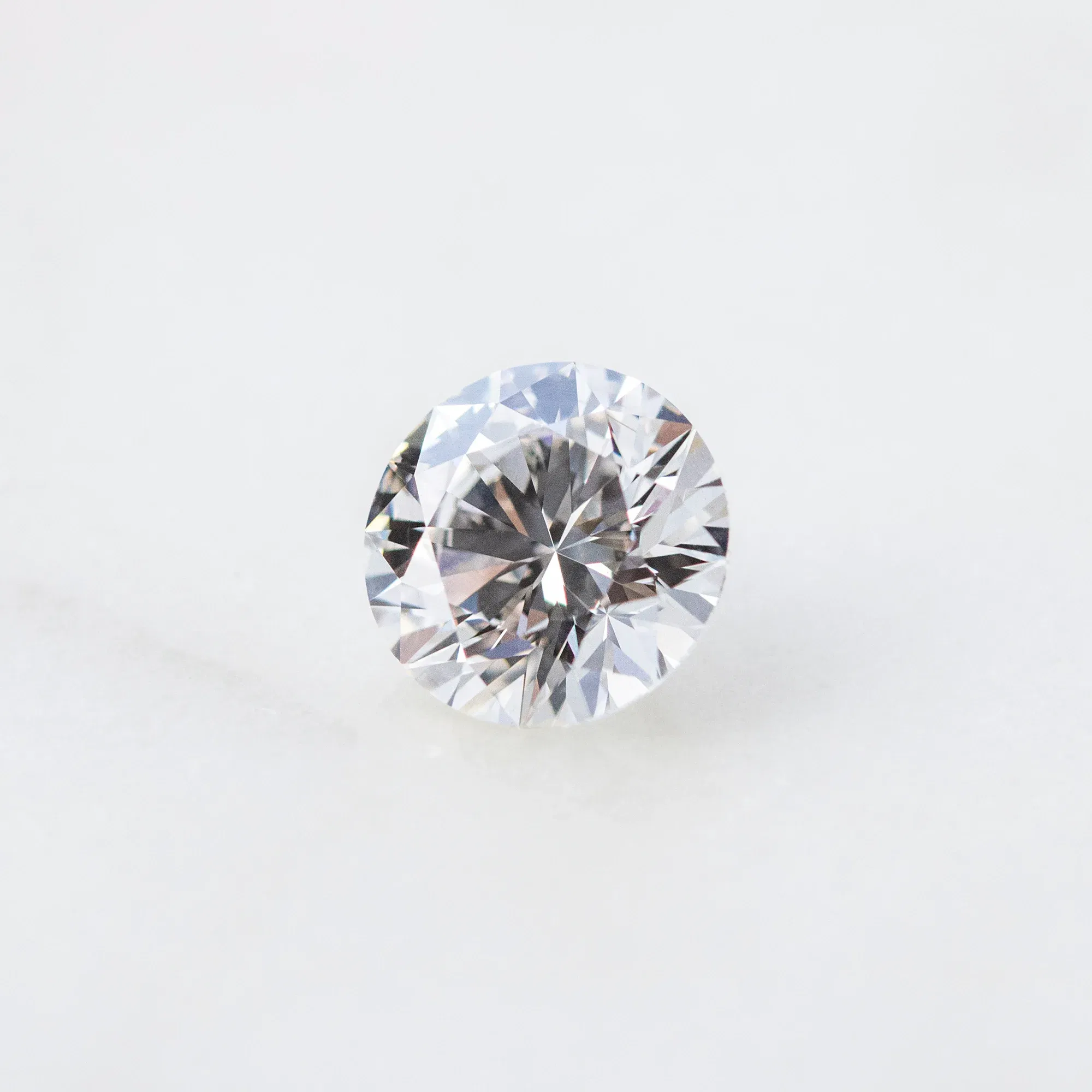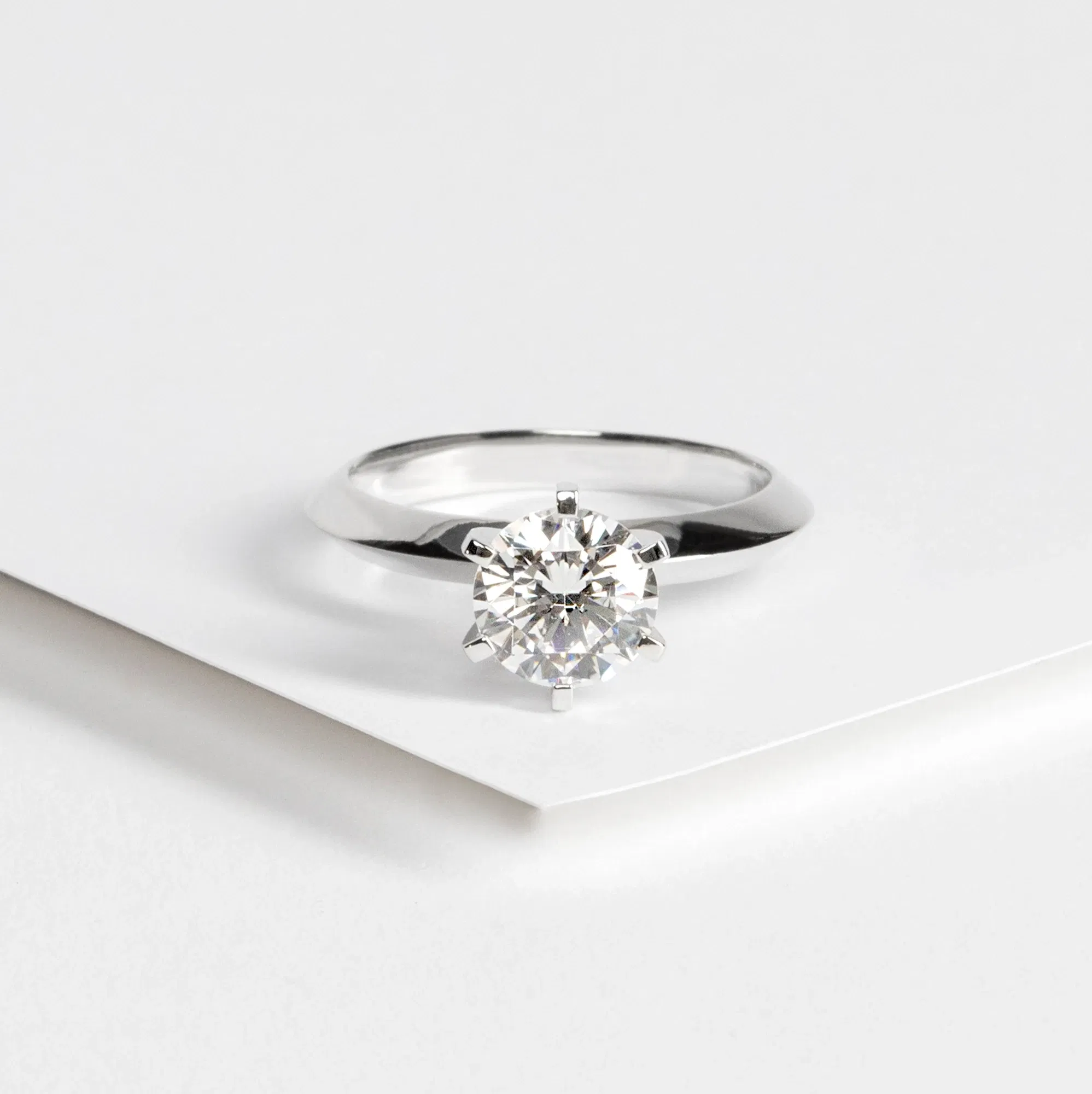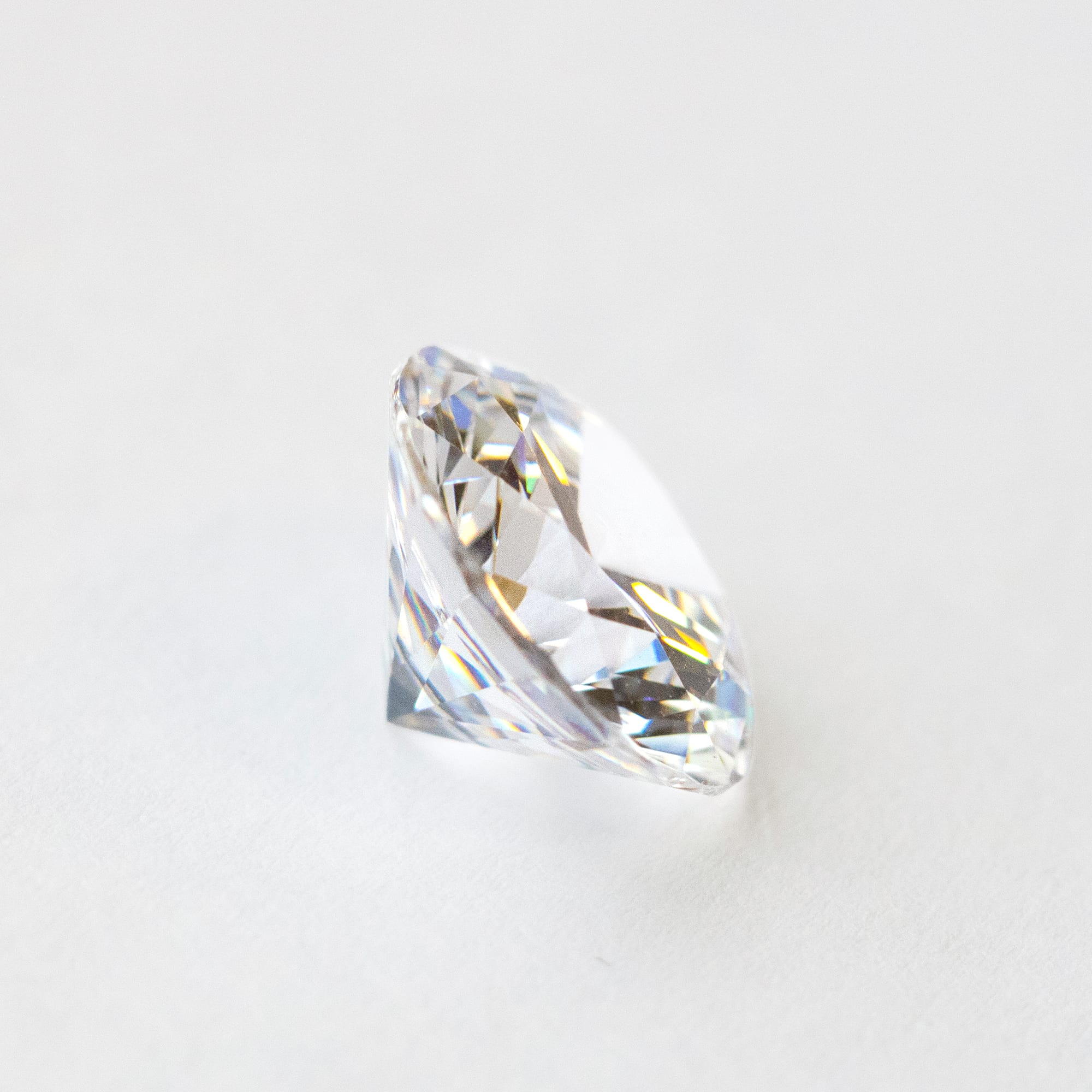Moissanite - The Sparkling and Unique Diamond Alternative Stone
What Is Moissanite?
Moissanite is an exquisitely beautiful gemstone that offers a number of benefits for those seeking a unique and affordable alternative to traditional diamonds. With a hardness rating of 9.25 on the Mohs scale, moissanite is nearly as durable as diamond and can withstand the everyday wear and tear of an engagement ring. What’s more, moissanite’s superior refractive index means it has more fire and brilliance than diamond, making it a truly eye-catching stone. These qualities, coupled with its budget-friendly price point, have made moissanite engagement rings a popular choice among couples who want a beautiful and ethical gemstone that will last a lifetime.

THE SCIENCE BEHIND THE SPARKLE
Moissanite is one of the most beautiful gemstones in the world
Many see more sparkle, fire and brightness from a moissanite than from a diamond.
- Moissanite is more brilliant than a diamond on the Brilliance Refractive Index (which measures a gem’s sparkle).
- Moissanite has a greater dispersion and iridescence (commonly referred to as “fire”) than a diamond.
- Moissanite has double the brightness of a diamond: It’s twice as refractive as a diamond. Refractivity is how many times light is “bent” when it passes through a gemstone.
DISCOVERED FIRST IN A METEOR CRATER
Now a lab-created stunner
The naturally occurring mineral moissanite was discovered by Henri Moissan while examining rock samples from a meteor crater located in Canyon Diablo, Arizona. Henri mistakenly identified moissanite as a diamond, but later he correctly identified the crystals as silicon carbide. This mineral form of silicon carbide was named “Moissanite” in honor of Henri, later on in his life.
While moissanite is a naturally occurring material, it is incredibly rare to find. In 1998, the lab creation of moissanite was perfected through a sophisticated, scientific process and then offered widely to the consumer market.


EXCEPTIONAL QUALITY
An affordable, durable, and eco-conscious alternative to a mined diamond
The moissanite gemstones we offer are exclusively lab created. Moissanite gemstones are colorless (graded D, E, or F), of high clarity (VS1 or better), and are manufactured to an Excellent Cut, Polish and Symmetry.
- Moissanite is extremely durable and can be set and finished into all types of fine jewelry.
- Moissanite ranks on the Mohs hardness scale at 9.25 or better.
- Moissanite is less susceptible to cracking and chipping than a diamond as it has greater tensile strength and is less brittle than diamond.
How is Moissanite Made?
When French scientist Henri Moissan first discovered moissanite in a meteor crater in Arizona in 1893, he believed he had stumbled on a trove of diamonds. But Moissan’s sparkling discovery was stunningly distinct. With further investigation, it became crystal clear that the scientist had chanced upon a new stone entirely—one made from silicon carbide, which, like the carbon that comprises diamonds, boasts incredible strength, durability and thermal conductivity.
Because of the rarity of naturally occurring silicon carbide, this brilliant gem—aptly named moissanite to honor Henri—is almost always developed in labs through painstaking, fastidious care. Each lab-created moissanite stone emerges from a meticulous two- to three-month process that combines intense heat and pressure to create lasting radiance, brilliance and fire, similar to that of a natural moissanite. The result? A diamond alternative destined to shine for generations.
What are the Pros and Cons of Moissanite?
Pro: Affordable Pricing
What is a moissanite stone if not the best very of both worlds: decidedly premium quality and genuine affordability. With more than twice the fire of a diamond at a fraction of the cost, durable moissanite gemstone combines luxury and accessibility.
According to the International Gemstone Society, by spending less than $1,000, you can receive a moissanite stone the size of a one-carat diamond for three times less than the standard cost—and all without compromising on color or clarity. In fact, our lab-created diamond simulants cost up to 90% less than mined diamonds while featuring sparkling brilliance, long-lasting durability, and unique premium cuts. A stunning gemstone at a stunningly low price point? It’s no wonder that so many modern couples choose to commemorate their love with moissanite jewelry and engagement rings.
Pro: Ethical Origins
Every aspect of a moissanite stone shines, including its origins. Ethically sourced, lab-grown moissanite gemstone is renowned for its conflict-free nature and environmentally friendly processes, removed from unethical mining practices and engineered by scientists with sustainable practices in mind. Look and feel your best in diamond alternative engagement rings crafted with conscientious care and the utmost attention to clarity, color and cut. With eco-friendly simulants that dazzle just like diamonds—but don’t compromise your comfort or arrive with hidden costs—you can sparkle with confidence and enjoy beautiful peace of mind.
Pro: Irresistibly Sparkly
If you’re looking to turn heads and win hearts, it’s hard to find a more eye-catching or radiant stone than moissanite. This eco-friendly diamond alternative may even compete with the cut, clarity, and brilliance of comparable mined diamonds measured on the standard diamond carat size chart . But unlike mined diamonds which emit colorless flashes when exposed to light, silicon carbide is double-refractive, creating a multi-hued rainbow of shimmer with every turn of the stone or encounter with light. What does this mean for your premium Nexus Diamond™ jewelry? More fire, more brilliance and more sparkle in your go-to pendant, engagement ring or custom design.
Pro: Seriously Durable
Moissanite ranks a 9.25 out of 10 on the industry-standard Mohs Scale of Hardness, just a touch under the ranking of mined diamonds. The serious durability of moissanite makes it a perfect choice for the center stone in your fine jewelry pieces. Given their top-notch brilliance and incredible tensile strength, our moissanites deliver elegance and dazzle, without the worries about breaks, chips and cracks. Keep in mind, however, that certain gemstone cuts and shapes may require more delicate handling than others. Pear cuts and other elegant shapes may benefit from special settings that can help protect against everyday stress and damage. Speak with one of our experts about your unique needs.
Pro: Visibly Flawless
Lab-grown moissanite will certainly make an appealing option if your gemstone’s clarity is a top priority. Our moissanite diamond alternatives must achieve a clarity grade of VS or higher to be sold on the market. In other words, when you choose moissanite, you’re guaranteed a gorgeous stone with no visible flaws, perfect in appearance to the naked eye. And, when it comes to this gemstone, good things do last forever. This sparkly stone keeps its brilliance over time, so your fine jewelry can live on as a stunning heirloom piece that dazzles for generations to come.
Con: Slightly Different Sparkle Than Diamonds
While lab-grown moissanite offers greater brilliance than mined diamonds, differences in composition between the two gemstones result in slightly distinct sparkle patterns. Moissanite’s superior clarity—free of the inclusions and color variations in its mined counterparts—comes from a shift in light refraction properties. Moissanite is doubly refractive, which means that it sparkles much more—and much more colorfully—than the single refractive diamond.
While many delight in the dramatic blaze of this lab-grown dazzler, moissanite’s rainbow shimmer is distinctive—it does not perfectly match the white sparkle of real diamonds. The difference can be extremely subtle, especially with smaller stones, but experts with a trained eye can identify a diamond vs moissanite center stone based on sparkle alone.
Con: Hints of Warm Undertones
Colorless moissanite makes a fantastic alternative for those looking to simulate the versatility of the diamond. To attain its prized colorless quality, each gem undergoes a whitening process during its development. However, the ultimate degree of moissanite’s colorlessness may vary slightly from stone to stone. Some gems closely compare to near-colorless diamonds, while others may be slightly warmer in color with hints of yellow and green.
If you’re concerned about the hue of your gemstone, our experts can help you find your perfect diamond simulant. Each of our carefully crafted moissanite stones earns D, E, or F grades on the color scale of D to Z, with D being colorless.
Con: Less Access to Repairs, Resizing, and Resetting
While moissanite is one of the most promising additions to the world of fine jewelry, its innovative nature may make it more challenging to find jewelers that specialize in your stone in the event that you’re interested in resizing or resetting—at least compared to the many jewelers who work with mined diamonds.
Additionally, certain critics of moissanite argue that the stone does not retain its value over time. But this critique is not unique to moissanite; the same has been said of mined diamonds and other diamond alternatives within the retail space. It’s even possible that—given its durable quality and forever brilliance—moissanite boasts unparalleled longevity. If you have questions about caring for your moissanite jewelry through the years, our experts are happy to share insights and resources.
Moissanite Origins
What is moissanite? Part happy accident, part scientific innovation.
Nobel Prize-winning French scientist Henri Moissan first discovered moissanite in 1893 after hunting for minerals with properties that might be ideal for electrical conductivity. As he investigated rock samples that he’d collected from a meteor crater in Canyon Diablo, Arizona, Moissan noticed that his fragments carried an unmistakable shine. Diamond—or so he thought. In fact, Moissan had stumbled upon something much rarer, something with more brilliance and fire than even that of the coveted, carbon-based stone. Moisson identified the new material as the mineral form of silicon carbide, a hard, brilliant substance that is exceedingly durable and exceedingly rare. Today, we know this gemstone as “moissanite,” named in honor of Moissan’s contributions.
The path to creating lab-grown moissanite began after the stone’s initial discovery, but Moissan could not replicate the sparkly mineral. It wasn’t until the 1990s, more than a century after the discovery of the stone, that scientists from the Research Triangle Park in North Carolina patented a process for creating silicon carbide—the compound that compromises Moissan’s prized gem. Eventually, lab-grown moissanite entered the marketplace through this meticulous, sophisticated scientific process that requires at least two months per stone. Well worth it. Affordable, eco-conscious, and undeniably brilliant, moissanite continues to make a stunning impact as a diamond alternative.
Moissanite and the 4Cs
Moissanite is graded on the 4Cs just like diamonds are!
- COLOR
- CUT
- CLARITY
- CARAT





